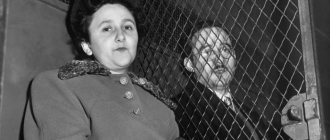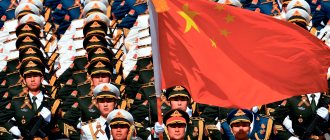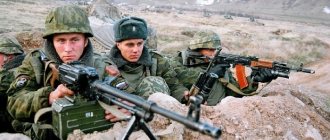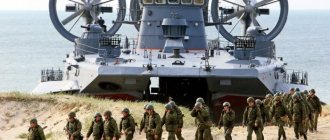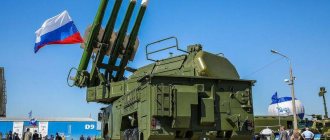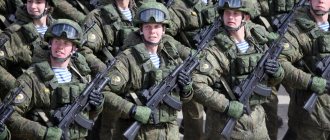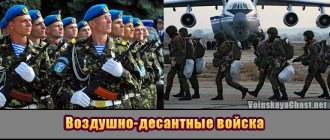In 1989, on the basis of the Marine Corps and coastal missile and artillery forces, a separate and independent army formation was created, located under the Department of the Navy. Soon it was supplemented by formations and units of the USSR Army, which were stationed on the coast. This military branch is today known as the Coastal Forces of the Navy. Nowadays, the BV performs the same tasks as in Soviet times. You will find information about the history of the creation of the Coastal Forces, structure, command and weapons in this article.
Acquaintance
Coastal troops are a military branch of the Russian Navy. The structure remained the same as during the years of the USSR. The BV consists of two military branches: Coastal Missile Forces and Marine Corps, which are adapted to independently solve certain target tasks. Also, if necessary, they can interact with other parts and connections. The main organizational units of the Coastal Fleet Forces are represented by brigades and battalions (divisions). The BV is part of the Navy and is subordinate to the Ministry of Defense of the Russian Federation. The number of Coastal troops is up to 35 thousand people.
Links[edit]
The article includes text from the Ministry of Defense of the Russian Federation, available under a CC BY 4.0 license.
- The Military Balance 2022. - P. 216.
- ^ a b c d e "Coastal troops of the Russian Navy". mil.ru.
_ Ministry of Defense of the Russian Federation. Retrieved November 28, 2022. - https://www.armyrecognition.com/october_2019_global_defense_security_army_news_industry/russian_costal_troops_in_crimea_armed_with_tornado-g_mlrs.html
- Creation of the 11th Army Corps, if necessary, to quickly increase the grouping of troops in the Kaliningrad region
- The formation of the 177th Marine Regiment has been completed in Kaspiysk.
- The new marine regiment of the Caspian Flotilla held its first lesson in combat training / mil.ru
- The Commander of the Northern Fleet presented the Battle Banner to Russia's first Arctic brigade: Ministry of Defense of the Russian Federation
History of creation
In the 17th century, the regular Russian fleet was created. According to experts, the naval fortress of Kronstadt and the island of Kronshlot became the prototype of the modern Coastal Forces. The forts formed on the orders of Peter I in 1703 defended St. Petersburg from the sea. Russian artillery systems were tested in the navy in the 19th century. Before the Great Patriotic War, powerful warheads were available in Sevastopol, Leningrad, Murmansk and Vladivostok. During the war years, Wehrmacht soldiers never managed to break through them. The only exception was the coastal defense of Sevastopol. Nevertheless, the 30th and 35th BV batteries showed steadfastness and heroism in battles with the Nazis.
Story
The creation of coastal troops began at the end of the 17th century, when the regular Russian fleet was being formed. In 1703, the city of St. Petersburg was founded, and then the question of protecting the city from the sea became acute. Fort Kronshlot and the Kronstadt Fortress became the basis of coastal defense.
For the first time in the Russian fleet, a team of marines was formed on the basis of the crew of the sailing ship "Eagle" in 1698. After a successful battle with the Swedish flotilla, on November 27, 1705, Peter I issued a decree on the creation of the first "regiment of naval soldiers."
The regiment had two battalions, each battalion had five companies, and a company had 125 soldiers. Total number of command personnel: 45 staff and chief officers, 70 non-commissioned officers; rank and file - 1250 people. The officers were armed with pistols and swords, and non-commissioned officers and privates used guns with baguettes (prototypes of gun bayonets).
Naval regiments participated with honor in all Russian wars. During the First and Second World Wars, naval soldiers carried out a number of brilliant amphibious operations.
Landing of armored vehicles of the Russian Navy coastal troops
BV tasks
The Russian coastal troops perform the following tasks:
- They provide cover from the sea for naval forces, army formations, the population and other objects located on the sea coast.
- They defend naval bases and other strategically important objects from the land side from attacks carried out by enemy sea and airborne assault forces.
- Destroy enemy surface ships, boats and landing vehicles.
- They interact with ground forces in coastal areas, which are considered the most vulnerable to attack by enemy ground forces.
Structure
Coastal troops are part of the Pacific Fleet under the leadership of Major General S.V. Pushkin. There are BV units in Crimea as part of the Black Sea Fleet (22nd Army Corps). The Coastal Troops are led by A. Kolotovkin with the rank of Major General. In the Baltic Fleet, the BV is staffed by the 11th Army Corps, which is operationally subordinate to fleet headquarters. The leadership of the Coastal Troops at the Baltic Fleet of the Navy is carried out by Lieutenant General, Hero of Russia A. Yu. Gushchin. In the Northern Fleet, the BV contains the 14th Army Corps. In 2015, Major General D. Kraev was appointed head. In the Caspian Flotilla, the Coastal Forces are part of the 414th Separate Marine Battalion (OBMP) and the 46th Separate Coastal Missile Division in the city of Kaspiysk and the 727th Separate Marine Corps in Astrakhan.
Composition and organization of the Navy
4>
The purpose and nature of the activities of the Navy require the presence in its composition of various types of forces capable of solving both offensive and defensive tasks in remote and coastal areas.
The Navy consists of two components: maritime strategic nuclear forces (NSNF), general purpose maritime forces (MPF), as well as support forces, special forces and fleet services.
The Navy includes four branches of forces: submarine forces; surface forces; naval aviation; Coastal troops of the Navy.
A branch of force is an integral part of a branch of the Armed Forces, including units and formations that have their own combat assets, weapons and equipment. Each type of force has its own characteristic combat properties, uses its own tactics and is intended to solve operational, tactical, operational-tactical tasks. Branches of forces, as a rule, operate in a certain geographical environment and are capable of conducting combat operations independently and jointly with other branches of forces.
In modern conditions, the main branches of the Navy, capable of most successfully solving the main offensive missions of the fleet using conventional and nuclear missile weapons, are submarine forces and naval aviation.
Naval strategic nuclear forces are an integral part of the country's strategic nuclear forces. They are represented by strategic missile submarines (rplSN) and are used in the operations of strategic nuclear forces according to the plan of the Supreme High Command.
General-purpose naval forces include all branches of the Navy and are used to solve operational and tactical tasks and conduct systematic combat operations.
Coastal troops as a branch of the Navy unites formations and units of the Marine Corps, coastal missile and artillery troops (BRAV), and in certain regions of the Russian Federation and groups of coastal troops (coastal defense troops).
Support forces, special troops and naval services include naval air defense forces, formations and units of special troops and services (intelligence, naval engineering, chemical, communications, radio engineering, electronic warfare, missile technology, technical support, search and rescue, hydrographic), formations, units and institutions of the rear. The composition of the Russian Navy is shown in Fig. 2.
Organizationally, the Navy of the Russian Federation consists of associations, naval bases, individual formations, units and institutions.
The Russian Navy is headed by the Commander-in-Chief of the Navy, who is one of the Deputy Ministers of Defense. Subordinate to him is the highest body of the Navy - the Main Headquarters of the Navy and the Directorate of the Navy.
A formation is a large organizational formation consisting of formations and units of various branches of the Navy, capable of independently or in cooperation with other types of armed forces solving operational (sometimes strategic) tasks. Depending on the composition and scale of the tasks of the association, they can be operational-strategic, operational and operational-tactical.
The regionally deployed operational-strategic formations of the Russian Navy include: the Northern, Pacific, Baltic and Black Sea fleets, as well as the Caspian flotilla. The basis of the Northern and Pacific fleets are strategic missile submarines and multi-purpose nuclear submarines, aircraft carriers, landing and multi-purpose surface ships, mine-sweeping ships and boats, diesel submarines, coastal missile and artillery troops and attack aircraft. The basis of the Baltic, Black Sea fleets and the Caspian flotilla are multi-purpose surface ships, mine-sweeping ships and boats, diesel submarines, coastal missile and artillery troops and attack aircraft.
The operational formations of the Navy include flotillas
(flotilla of heterogeneous forces, flotilla of rpl SN, flotilla of attack submarines) and
the naval air force.
The operational-tactical formations of the Navy include squadrons (operational squadron, squadron of heterogeneous forces, squadron of attack submarines, squadron of amphibious assault forces).
The regional deployment of the Navy requires the maintenance and development of independent basing infrastructures, shipbuilding and ship repair, all types of support, the basis of which is the historically developed system of cities - naval bases in Russia.
A naval base (naval base) is an equipped and defended coastal area with the adjacent water area, providing basing, comprehensive support, deployment and return of fleet forces. As a rule, it includes several bases, as well as forces and means to maintain a favorable operational regime in the assigned 8MB operational area of responsibility.
The composition of formations and naval bases is not constant. It is determined depending on the purpose, the nature of the tasks performed, the areas and directions in which they operate, as well as the conditions of the theater of military operations.
A formation is a permanent organizational formation of ships and units capable of independently solving tactical problems and participating in solving operational problems. The composition of connections is determined by their standard structure. Designed for purposeful combat training and ease of control. The division is the main tactical formation. Brigade and division
ships - tactical formations.
A division (brigade) of submarines consists, as a rule, of submarines of the same class (subclass). For example: a division of strategic missile submarines, a division (brigade) of torpedo submarines. Divisions (brigades) of surface ships consist of one or more classes (subclasses) of ships. For example: a division of missile and artillery ships. The division as a tactical formation is a formation of ships of rank 111 and IV. For example: a minesweeper division, a missile boat division, etc.
A tactical unit is a military formation capable of independently solving tactical problems. The units are: ships of the 1st, 2nd and 3rd rank, groups of ships of the 4th rank, a regiment (in naval aviation, marine corps, BRAV).
The part, in turn, consists of military units - small military formations. Typical units: combat unit (service), 4th rank ship, squadron, air unit, battalion, company, platoon, etc.
Special troops and services intended to support the combat activities of the Navy and solve their inherent special tasks are organized organizationally into formations, units, divisions and institutions that are part of the formations, formations and units of the Navy, and are also under central subordination. For example: a division of reconnaissance ships, a military construction detachment, a chemical defense battalion, a communications center, a radio engineering company, an electronic warfare squadron, an arsenal, bases and warehouses, a ship repair yard, a rescue ship brigade, a hydrographic detachment, an automobile company, a group of naval support vessels, etc. .
The organizational structure of the Russian Navy is shown in Fig. 3.
The qualitative and quantitative composition of troops (forces) of fleets (flotillas) must correspond to the level and nature of threats to the national security of the Russian Federation in a particular region.
The variety of tasks solved by the fleet necessitates the specialization of ships, i.e. the construction of ships with certain qualities, which led to the need to classify them.
All ships and vessels in the Navy are divided into groups.
The criterion for division is purpose. There are five groups: warships, combat boats, special purpose ships, sea support vessels, raid ships and support boats.
Warships and combat boats, i.e. the first and second groups determine the combat strength of the Navy and are intended to solve combat missions specifically.
The group of special purpose ships includes special purpose submarines, control ships, training ships, and reconnaissance ships.
The group of maritime support vessels includes vessels providing combat training, medical support, radiation safety and chemical protection, transport, emergency rescue, navigation and hydrographic support.
The group of raid support vessels includes vessels designed to support fleet activities in roadsteads and harbors. To them from-; Basic rescue vessels, self-propelled and non-self-propelled maintenance vessels, basic dry cargo and liquid vessels, tugboats, raid boats, etc. are carried.
Within groups, ships and vessels of the Navy are divided into classes. The criteria for dividing into classes are the tasks to be solved and the main weapon. For example, submarines are divided into two classes, and surface ships into five classes.
Within classes, combat ships and special purpose ships are divided into subclasses. The criteria for dividing into subclasses are displacement, type of power plant, narrower specialization, cruising range.
Depending on the tactical and technical elements and purpose, as well as to determine the seniority of commanders, the legal status of the officers and the standards of logistics, warships are divided into ranks. There are four ranks of ships in the Russian Navy. The first is the highest. The division into classes and ranks is determined by the Regulations on the classification of ships and vessels of the Navy.
6 depending on the design features of ships of the same and
of the same subclass also differ in types and designs.
The classification of ship personnel in different countries has its own characteristics and is not constant. As the fleet develops, with changes in its missions and ship armament, new classes (subclasses) appear, and obsolete ones are excluded from the fleet. Thus, after World War II, most states excluded the class of battleships and subclasses of convoy aircraft carriers from the fleet, and the subclass of patrol ships was excluded from the US Navy. With the equipping of the fleet with missile weapons, a class of missile ships appeared.
The future of the fleet lies in multi-purpose, universal ships capable of effectively combating air, surface, underwater and coastal targets. Therefore, the number of ship classes will be reduced. At the same time, there are specific tasks that require the use of special materials and design solutions in the construction of ships, for example, mine ladders, landing ships, and some special-purpose ships, the universalization of which is impractical.
4>
Date added: 2016-07-22; views: 11641; ORDER A WORK WRITING
Find out more:
About the command
The leadership of the Coastal Troops is carried out by the Chief of the Navy's BV. There is also a command for each fleet, flotilla and naval base.
From 1956 to 1966, the leadership of the BV was carried out by Major General S.S. Makarov.
From 1966 to 1977 and from 1977 to 1987 - Melnikov P.E., Sergeenko B.I. These officers also held the rank of major general.
In 1987, Colonel General I.V. Skuratov was appointed to the post of commander of the BV.
In 1995 he was replaced by Major General V.I. Romanenko.
From 1996 to 1997 The leadership of the Coastal Troops was carried out by Major General V.I. Tarasov.
From 1997 to 2005, the head of the Navy's military base was P.S. Shilov with the rank of lieutenant general.
In the period from 2005 to 2009, the Coastal Forces were led by Lieutenant General Starcheus I.E.
From 2009 to the present day, A. N. Kolpachenko has been at the head of the Russian BV with the rank of lieutenant general.
Recommendations
This article includes text from the Ministry of Defense of the Russian Federation, available under a CC BY 4.0 license.
- The Military Balance 2022. - P. 216.
- ^ a b c d f
“Coastal troops of the Russian Navy.”
mil.ru.
_ Ministry of Defense of the Russian Federation. Retrieved November 28, 2022. - https://www.armyrecognition.com/october_2019_global_defense_security_army_news_industry/russian_costal_troops_in_crimea_armed_with_tornado-g_mlrs.html
- Creation of the 11th Army Corps, if necessary, to quickly increase the grouping of troops in the Kaliningrad region
- The formation of the 177th Marine Regiment has been completed in Kaspiysk.
- The new marine regiment of the Caspian Flotilla held its first lesson in combat training / mil.ru
- The Commander of the Northern Fleet presented the Battle Banner to Russia's first Arctic brigade: Ministry of Defense of the Russian Federation.
About weapons
Rocket, motorized rifle and artillery units counter sabotage forces and enemy marines using the following weapons and military equipment:
- Tanks T-80 VM, T-72B and T-72B3. The total quantity is at least 250 units.
- BMD-2 tracked amphibious combat vehicles.
- BMP-2 tracked vehicles (400 pieces).
- Floating armored personnel carriers MT-LB (300 units).
- Armored personnel carriers BTR-80 (100 vehicles).
- Russian modernized armored personnel carriers BTR-80A (600 units).
- Artillery missile systems (RK) "Redut".
- Mobile coastal missile systems "Rubezh".
- RK "Bastion" and "Bal" (36 guns each).
- Coastal self-propelled artillery systems A-222 "Bereg" in the amount of 36 units.
- Tactical missile systems "Tochka-U" (12 pcs.).
- Regimental self-propelled howitzers 2S1 “Gvozdika” (95 guns).
- Divisional howitzers 2S3 "Akatsiya" (50 units).
- Self-propelled artillery mounts 2S19 “Msta-S” and “Nona-S” 2S9, 18 and 30 pcs. The Russian BV also has 12 modernized Nona-SVK2S23 self-propelled gun mounts.
Coastal defense personnel also have Uragan and Grad 9K51 multiple launch rocket systems, 2B14 Tray mortars, and Khrizantema-S, Shturm-S, Konkurs, and Kornet anti-tank weapons.
About air defense systems
Air defense is carried out by military personnel of the Coastal Forces using the following types of army equipment:
- Man-portable anti-aircraft missile systems "Igla-S".
- Self-propelled anti-aircraft guns "Shilka" in the amount of 60 guns.
- SAM systems "Strela-1" and "Strela-10", the total number of which is 50 units.
- Anti-aircraft missile and gun systems "Tunguska" and "Pantsir-S1".
In addition, the Coastal Forces are equipped with unmanned aerial vehicles, vehicles, all-terrain vehicles and engineering equipment.

